Istanbul is a city that possesses many rare qualities that make it an absolute must-visit destination for anyone fond of traveling. The city is famous for spanning the two continents of Europe and Asia but also for its storied past at the heart of multiple civilizations, from the Greeks and Romans to the Byzantines and Ottomans and onto the modern Turkish republic.
Once you begin looking at what makes the list of the best things to do in Istanbul, you’ll see that Istanbul is easily one of the greatest cities in the world, especially for tourists. With such a vast, complex, and important city like Istanbul, planning a visit can feel a little daunting. That’s why we’ve put together this Istanbul itinerary that covers how to spend 3 days in Istanbul. You may choose to follow it to the letter or tailor it to best suit you, but if nothing more, it will give you a place to start your planning and make the trip feel a little more manageable.
Best Time to Visit Istanbul
When planning a trip, it’s always wise to think about the timing of your visit since you’ll have a vastly different experience depending on when you go. The contrast from one season to the next in Istanbul is remarkable, both in terms of weather but also tourist numbers, hotel availability, and cost. To find the right time for your visit, you’re going to need to decide your priorities and plan accordingly.
Generally speaking, the best time to visit Istanbul is during the shoulder months of March to May and September to November. During these months, the weather is ideal for walking around the city and sightseeing while not being as busy as the high season, from June to September.
Summer may be the most popular time to come to Istanbul for tourists, but it can get quite hot like most of Turkey at that time and you’ll have to contend with lines at their longest for major attractions. Winter is the quietest and cheapest time to visit the city, but Istanbul can get quite cold and even see snow, which might dampen your enthusiasm for sightseeing.
One other thing to keep in mind when planning your trip is the timing of Ramadan. The holy Muslim month of fasting is an extremely busy time to travel in Turkey and probably best avoided if possible. The challenge is that Ramadan follows the Islamic calendar, so the timing of the month shifts from year to year. Therefore, it’s best to look up its dates before you make your plans.
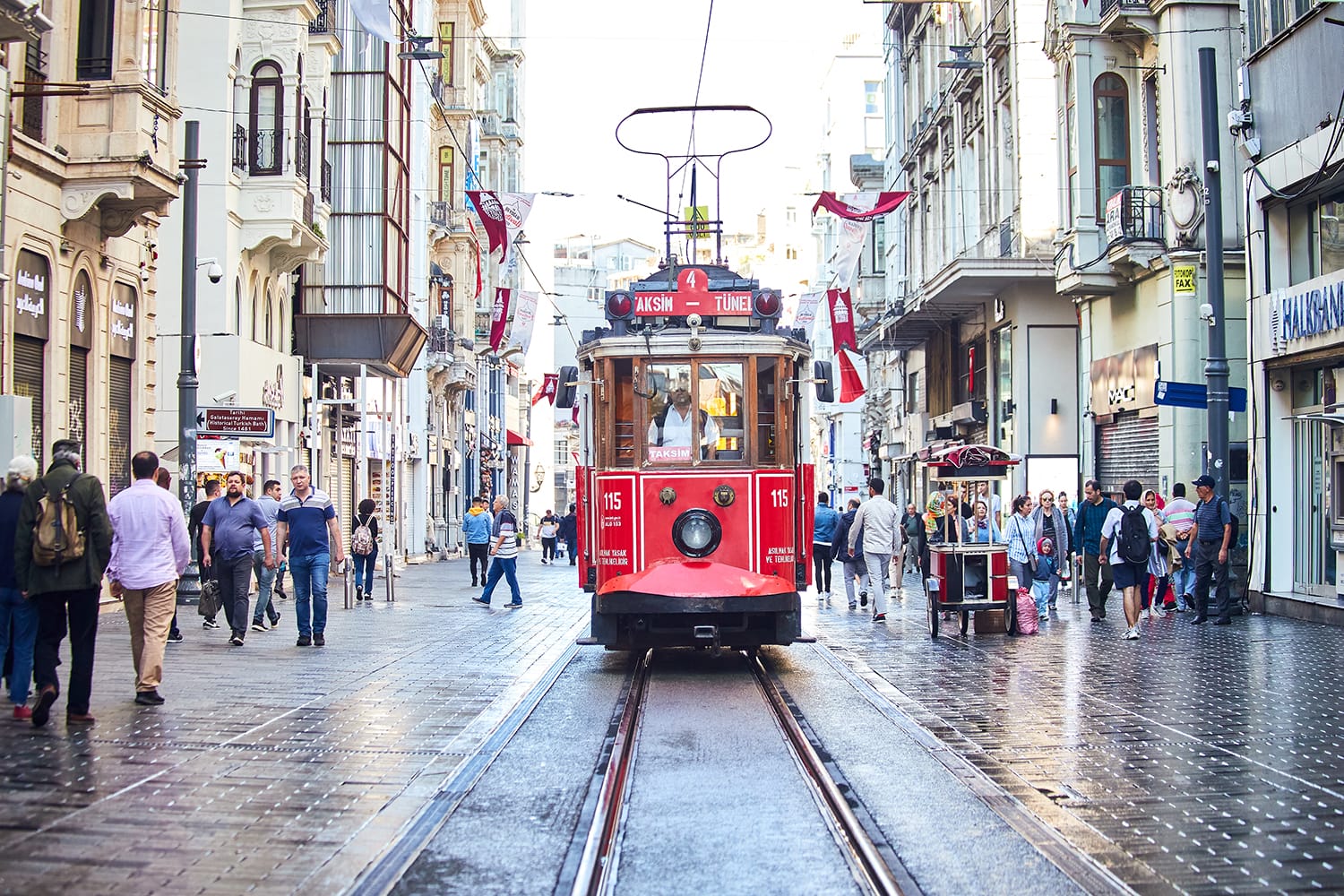
How to Get Around Istanbul
When visiting Istanbul, you’re going to spend quite a lot of time exploring different parts of the city. That is the only way to fully appreciate how varied the city can be, after all. To do so, you’re going to need to know your options for getting around. Walking will be an option in certain areas, but you also have at your disposal the trams, buses, metro, and ferries that make up Istanbul’s public transportation system.
To get around and between areas like Sultanahmet, Taksim, and Galata, you’ll find that trams, buses, and the metro offer plenty of options. For the neighborhood of Ortaköy, taking the bus is really the only option. And, of course, ferries are the obvious choice for crossing the Bosporus, with plenty of options that connect the European and Asian sides of the city.
The Istanbulkart is a rechargeable plastic prepaid card that serves as your ticket for travel on the city’s metro, buses, trams, funicular, and ferries. You can purchase the Istanbulkart from kiosks around the city, as well as from yellow vending machines at most stations and tram stops. The card itself costs 13TL, and then you will need to add funds to pay for your travel fares. A regular trip on most forms of transport costs around 5TL, while ferry trips can cost around 8TL.
Recommendation: Another popular way to get around for tourists is on a hop-on hop-off bus tour. The bus stops at all the famous landmarks in the city, including the Hagia Sophia and Blue Mosque, and with a 24-hour ticket you can hop on and off at any of them.
If you’re arriving in Istanbul by plane, there are a few things you need to know. Most important is that Istanbul has two airports, Istanbul Airport (IST) on the European side and Sabiha Gökçen International Airport (SAW) on the Asian side of the city.
To get from Istanbul Airport to the city, you can either take a taxi or a variety of airport shuttle buses and public buses (the slowest option) to places all over the city. Bus tickets cost around 11TL and airport shuttle buses cost 25–45TL, depending on the route. To get from Sabiha Gökçen International Airport to the city, you have the choice of taxi or the airport shuttle bus to Taksim and whatever public transport you need to get to your final destinations. The airport shuttle bus costs 24TL and takes around 90 minutes.
You can also book a private airport shuttle in advance here.
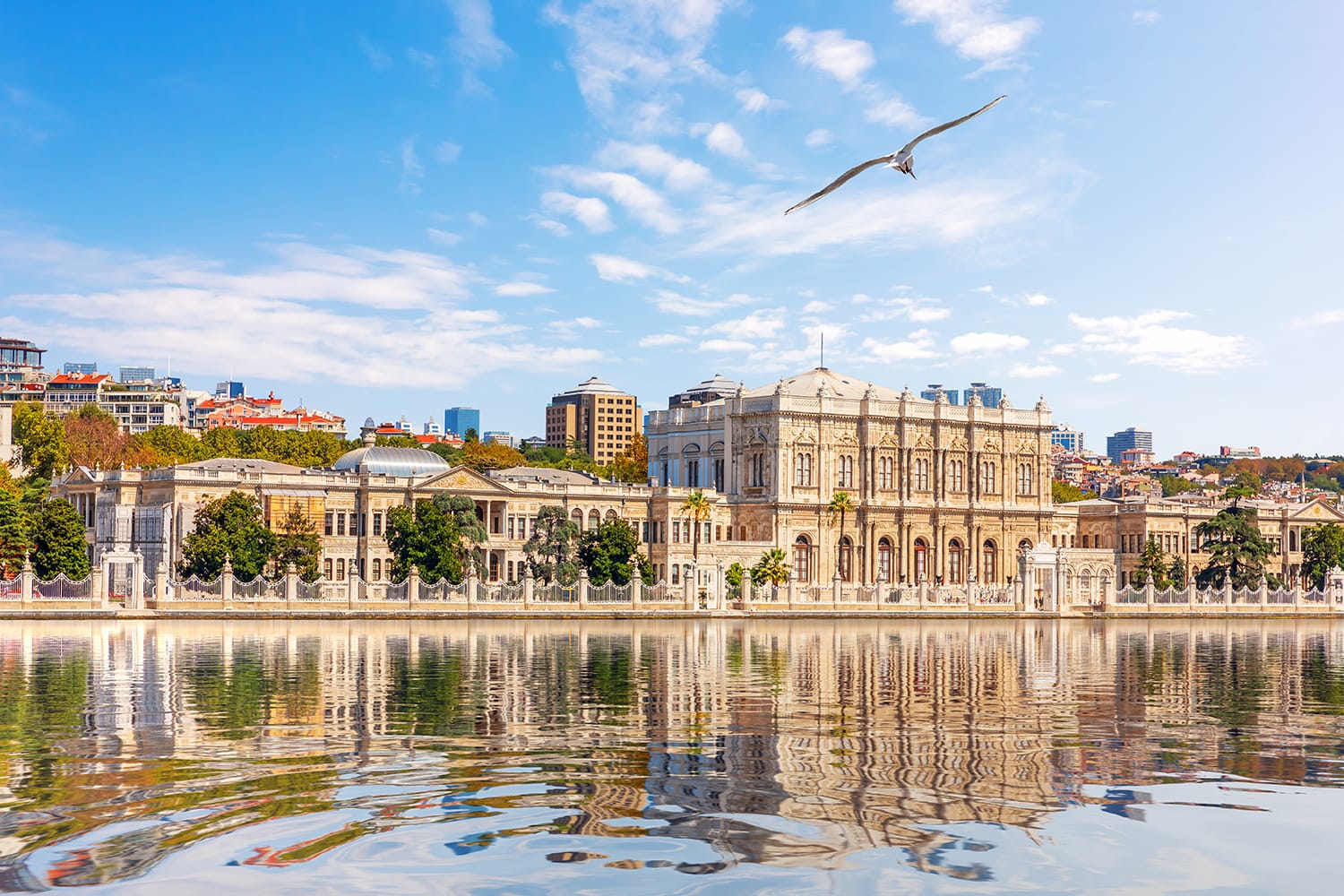
Where to Stay in Istanbul
With a city of its magnitude and popularity, it should be no surprise that there are endless options for where to stay in Istanbul. To narrow those options down and find the right fit, you need to think about your budget, how you like to travel, and, frankly, what’s available. We always recommend booking accommodation well in advance, especially during summer, to ensure you don’t miss out on the best places for you.
Location is also important as some parts of Istanbul are more convenient to stay in than others. Perhaps the simplest option among the best places to stay in Istanbul is Sultanahmet, which is essentially the historic district of Istanbul and where you find many of the city’s highlights. But the neighborhoods of Taksim and Galata are also convenient for sightseeing and experiencing city life. A left-field choice is to stay on the Asian side of the city, but that does come with added travel time each day to reach most of Istanbul’s main attractions.
You won’t come across a more elegant and interestingly styled place to stay in Istanbul than the Hagia Sofia Mansions Istanbul. This five-star hotel is perfectly located between the Hagia Sophia and Topkapı Palace and offers rooms with a Baroque/Turkish bath design, multiple dining options, and a fully equipped fitness center.
There are plenty of mid-range accommodation and apartments to choose from in Istanbul, but we think that the Basilissis Hotel is a great example of value for money. Situated just off Gülhane Park, this three-star hotel has a contemporary feel and all the essentials you could possibly need.
Istanbul is an excellent destination for budget travelers thanks to places like the Antique Hostel. This hostel, just behind the Blue Mosque, provides guests with both dorms and private rooms, as well as an excellent complimentary breakfast. It even has its own rooftop bar/café.
For more accommodation options in Istanbul check out Booking.com. They continuously offer the best rates and their custom service is on point.
The Perfect 3-Day Istanbul Itinerary
Even in an incredible destination like Istanbul, you’d be surprised just how much of the city you can experience in a few days. While you can certainly spend longer in the city, 72 hours in Istanbul allows you plenty of time to see the city’s best sights. As you explore, you’ll get to visit neighborhoods on Istanbul’s European side like Sultanahmet, Taksim, and Galata, as well as venture across the Bosporus and see the city’s Asian side.
However, before we get to our Istanbul itinerary, we just wanted to remind you to purchase travel insurance. You never know what will happen and, trust us, you do not want to get stuck with thousands of dollars in medical bills. As a wise man once said, “If you can’t afford travel insurance, you can’t afford to travel.” So don’t leave home without it.
SafetyWing offers travel insurance for only about $10 a week, making it a no-brainer to get. You can get a quick, non-binding quote below:

SafetyWing is, of course, not the only option available. Two other popular alternatives are World Nomads and Heymondo.
Now that we’ve handled that important topic, let’s get back to our Istanbul travel itinerary. Allow us to show you what to do in Istanbul in 3 days to ensure that you get to experience the best of Istanbul and don’t miss out on anything.
Istanbul Itinerary: Day 1
The best way to start your visit is to focus on the famous attractions around Istanbul’s popular Sultanahmet area, where you’ll then see why so many visitors immediately fall in love with the city.
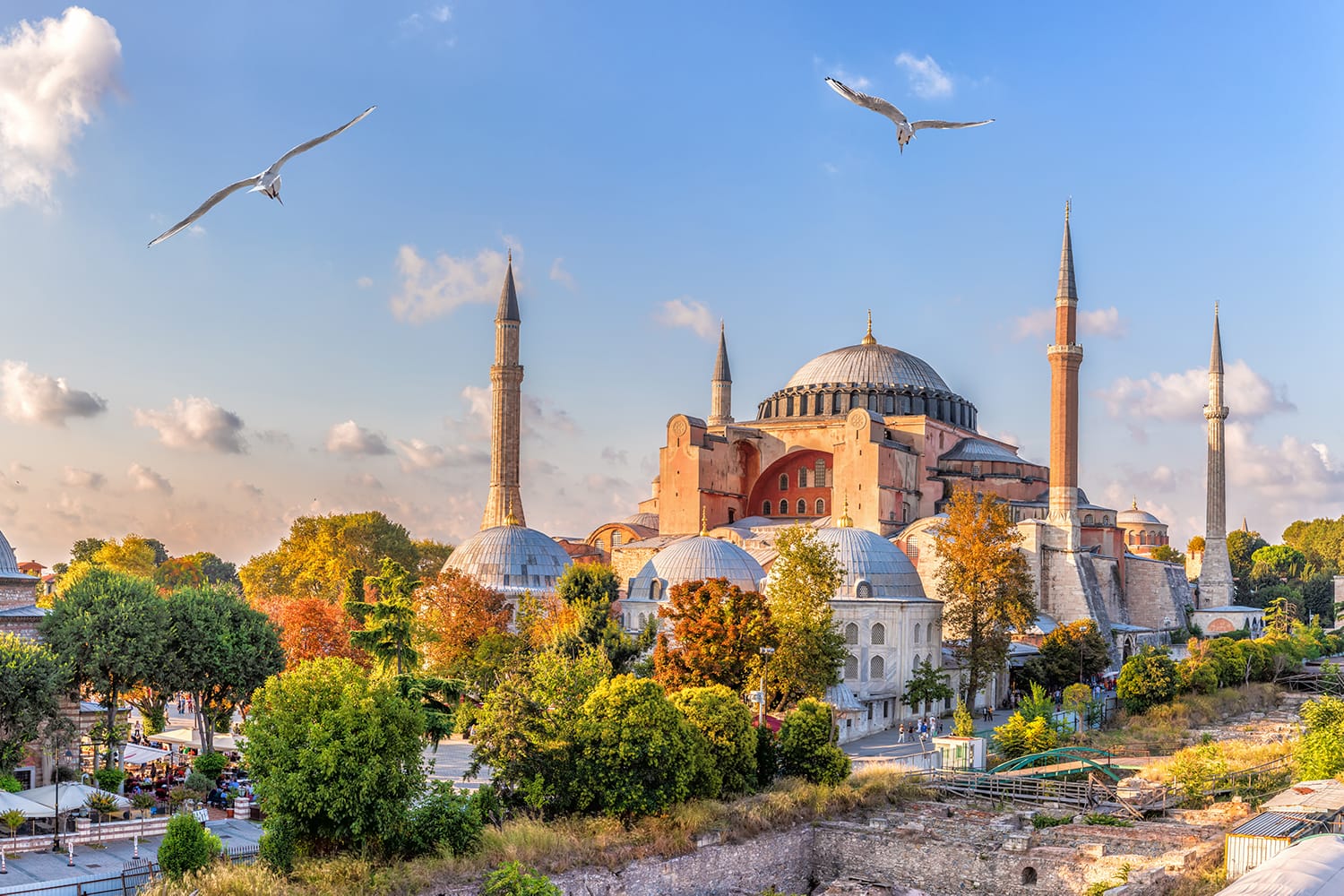
Hagia Sophia
One of the best places to visit in Istanbul is the Hagia Sophia. This colossal landmark has dominated the city’s skyline since Istanbul was called Constantinople. Built in 537 by the Byzantine Emperor Justinian I as a cathedral, the Hagia Sophia is considered the height of Byzantine architecture. For almost a thousand years, it was the largest cathedral in the world and famous for the innovative design of its huge and heavy dome.
While the Hagia Sophia has transitioned from a cathedral to a mosque to a museum and back to a mosque, much of it remains pristinely preserved. Visiting inside the mosque is free to the public, and there you can marvel at its glorious interior that blends all the elements of its past. Make sure to venture up to the upper gallery to get a different vantage point of the remarkable space.
Book a guided tour of Hagia Sophia here!
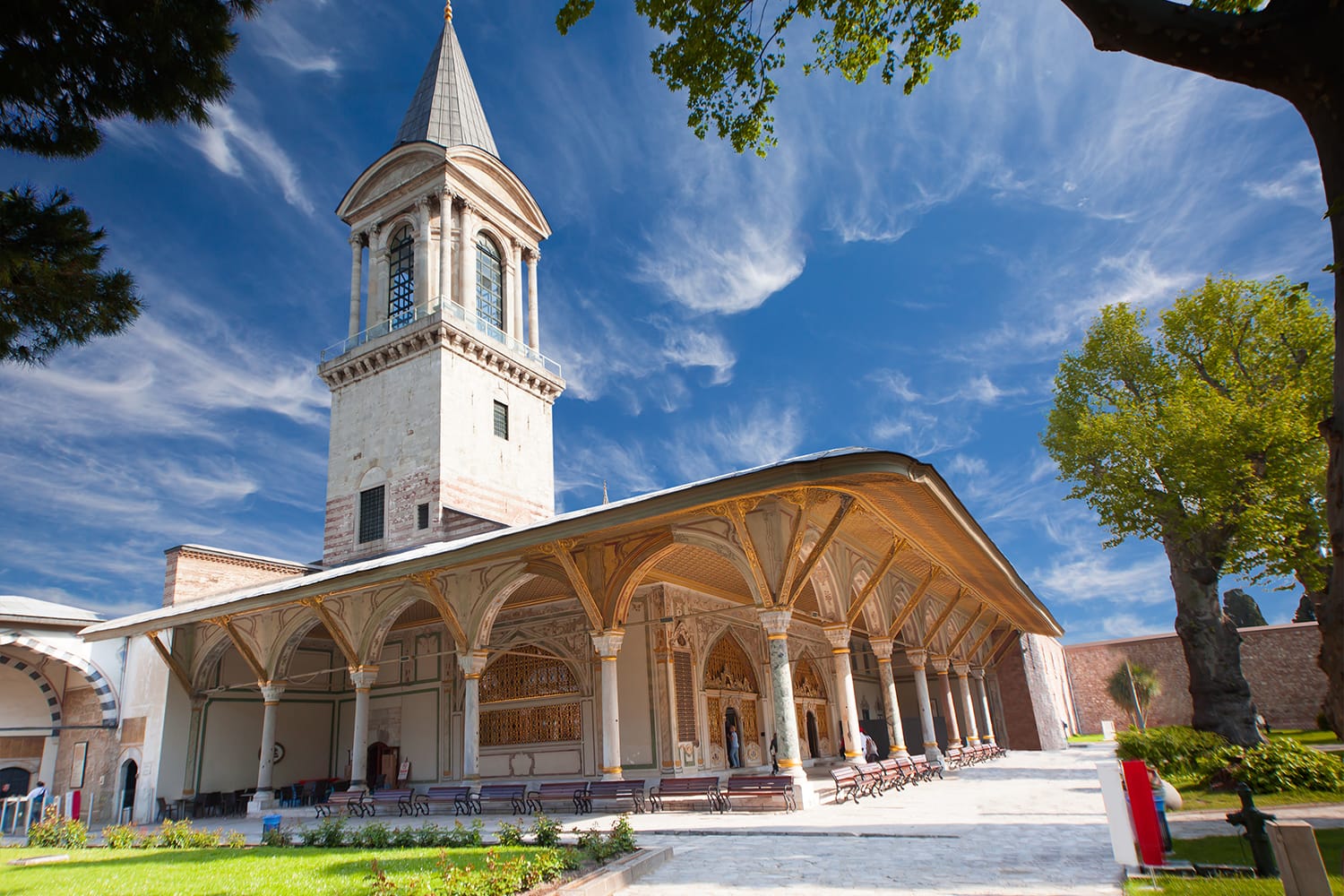
Topkapi Palace
Once the main residence for the sultans of the Ottoman Empire, the Topkapi Palace is another of Istanbul’s most striking attractions. The palace was built for Sultan Mehmed the Conqueror in the 15th century and includes lavish courtyards, courts where the sultan lived and worked, and the harem complex that was home to the sultan’s concubines and children. Today Topkapi Palace serves as a museum to the city’s Ottoman period and features the Imperial Treasury, which holds artifacts and jewelry that need to be seen to be believed.
Book a guided tour of the Topkapi Palace here!
Recommendation: Skip the ticket lines to enter the Hagia Sophia, the Topkapi Palace and Basilica Cistern by purchasing your combo ticket in advance here.
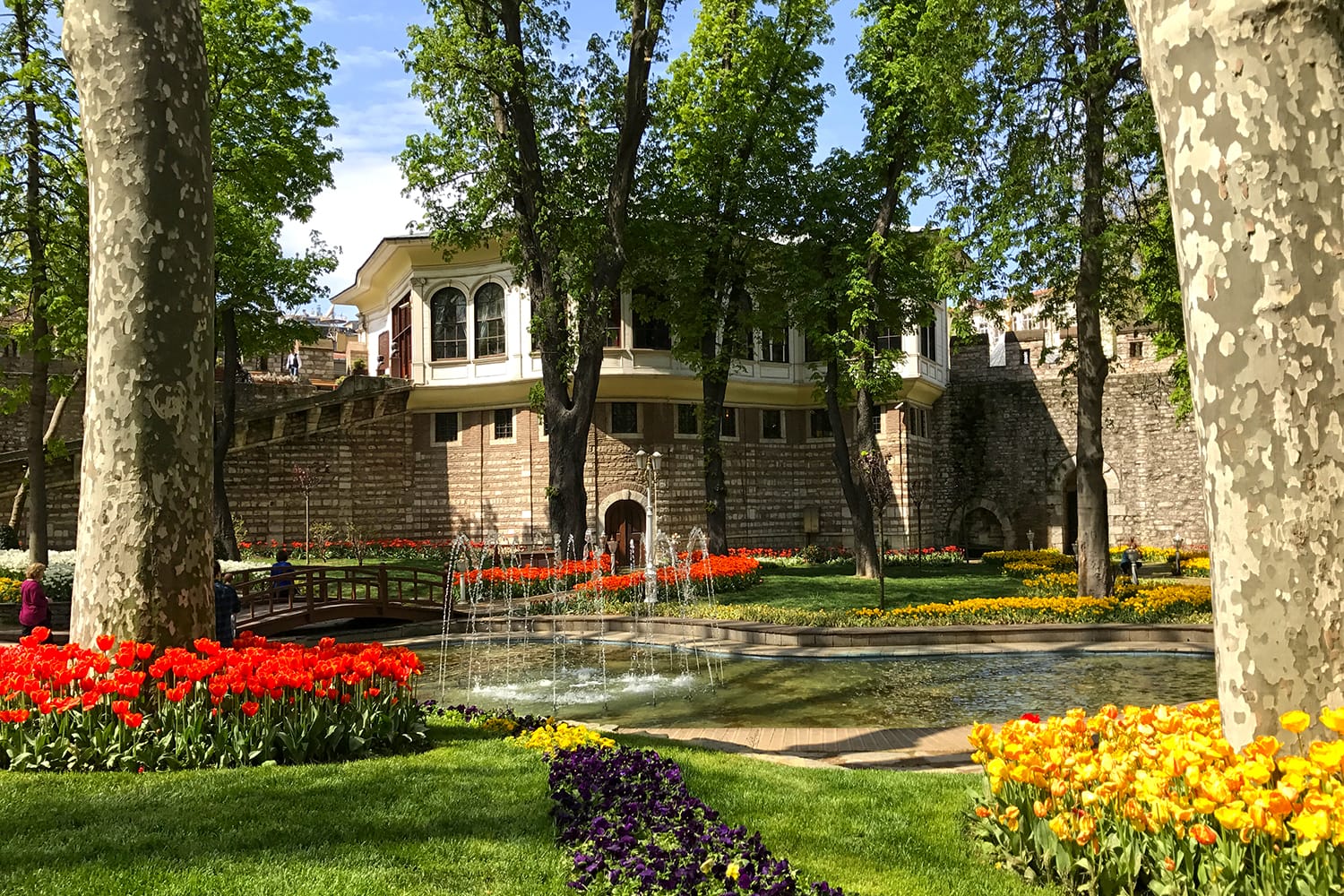
Gülhane Park
Bordering Topkapi Palace to the northeast is Gülhane Park, the oldest urban park in the city; it once served as the palace’s outer garden. With long, tree-lined paths through it and vibrant flower beds that come alive in spring, Gülhane Park is a beautiful place to stroll around. Its name translates to Rosehouse Park, which should give you some idea of what you might see there, although the park does host the annual Istanbul Tulip Festival in April as well.
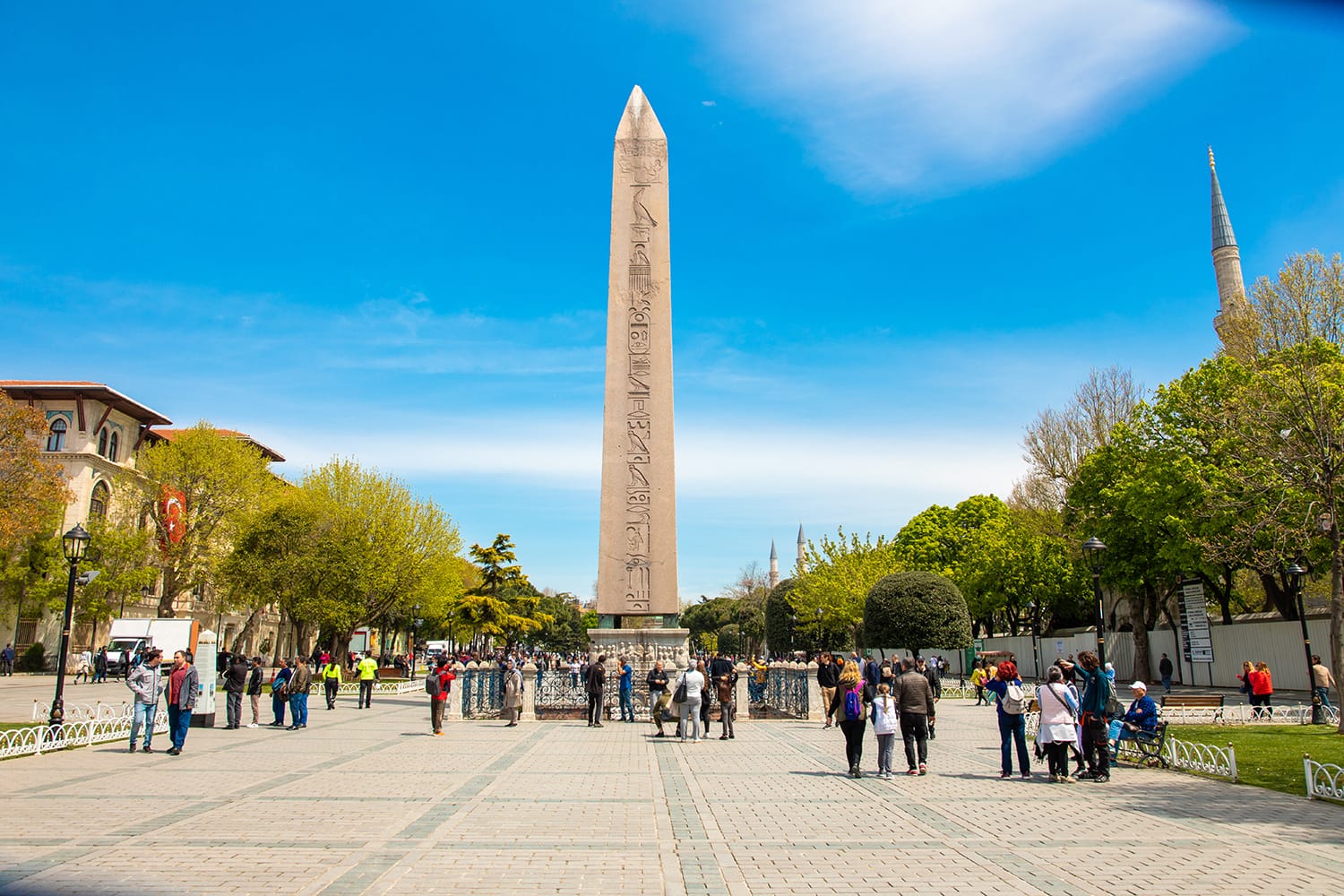
Sultanahmet Square
The Sultanahmet area features many of the city’s best known landmarks, and Sultanahmet Square is the vast public plaza that sits between many of them. It’s also known as the city’s Hippodrome because the area was once the site of the circus that hosted chariot races during the Byzantine era. Walking about you won’t be able to see much of the ancient circus today; instead, you’ll find a large paved space leading between an ornamental Ottoman fountain and a collection of monuments from Ancient Egypt, including two tall stone obelisks.
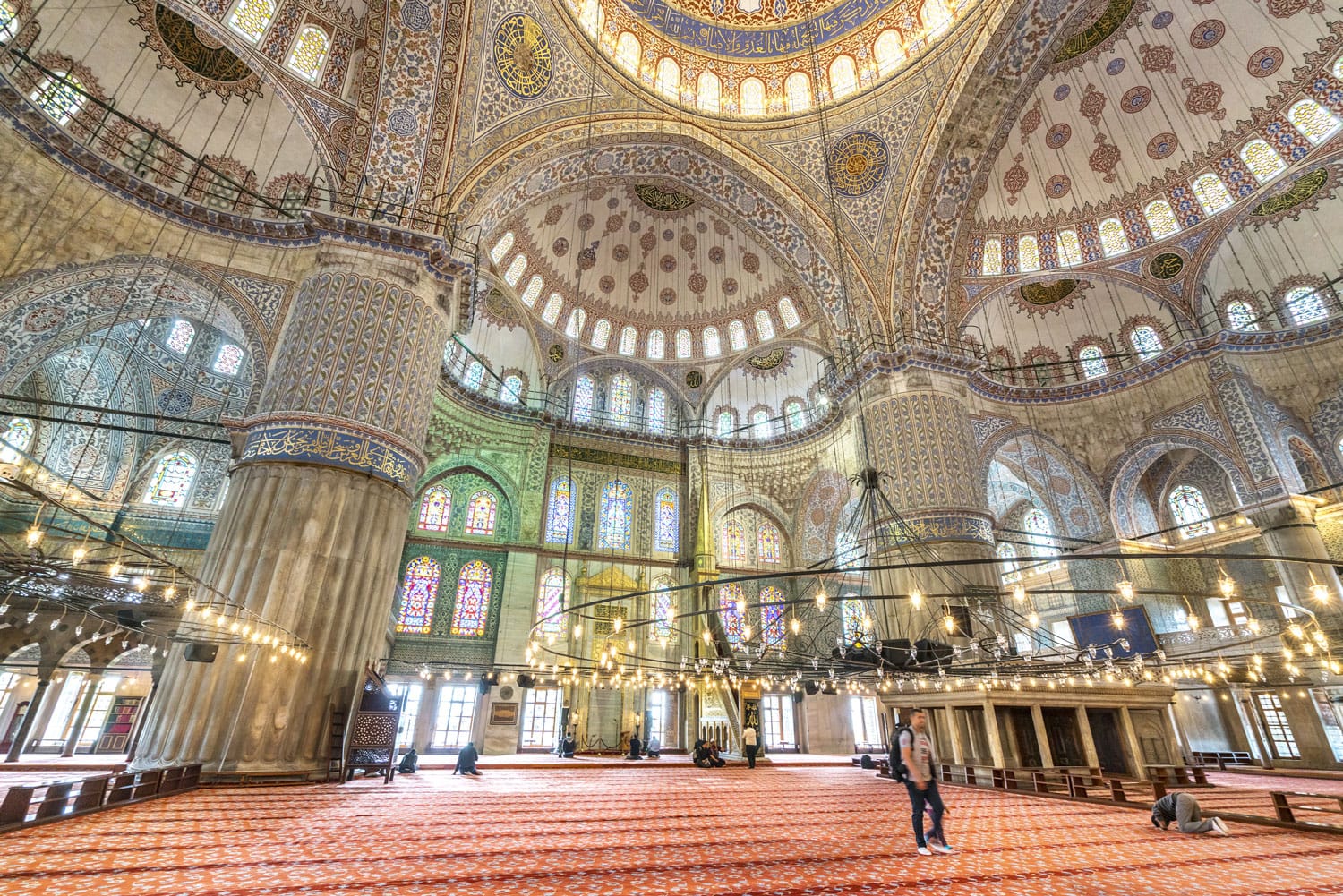
Blue Mosque
From Sultanahmet Square, it’s just a matter of steps to what may be the most famous mosque in all of Istanbul, the Blue Mosque. This stunning structure from the 17th century earns its name due to the hand-painted blue tiles that cover its interior, as well as the blue lights that illuminate its exterior at night. It’s useful seeing the inside of the Blue Mosque early on in your time in Istanbul because you’ll soon realize after visiting a few mosques just how unique its interior really is.
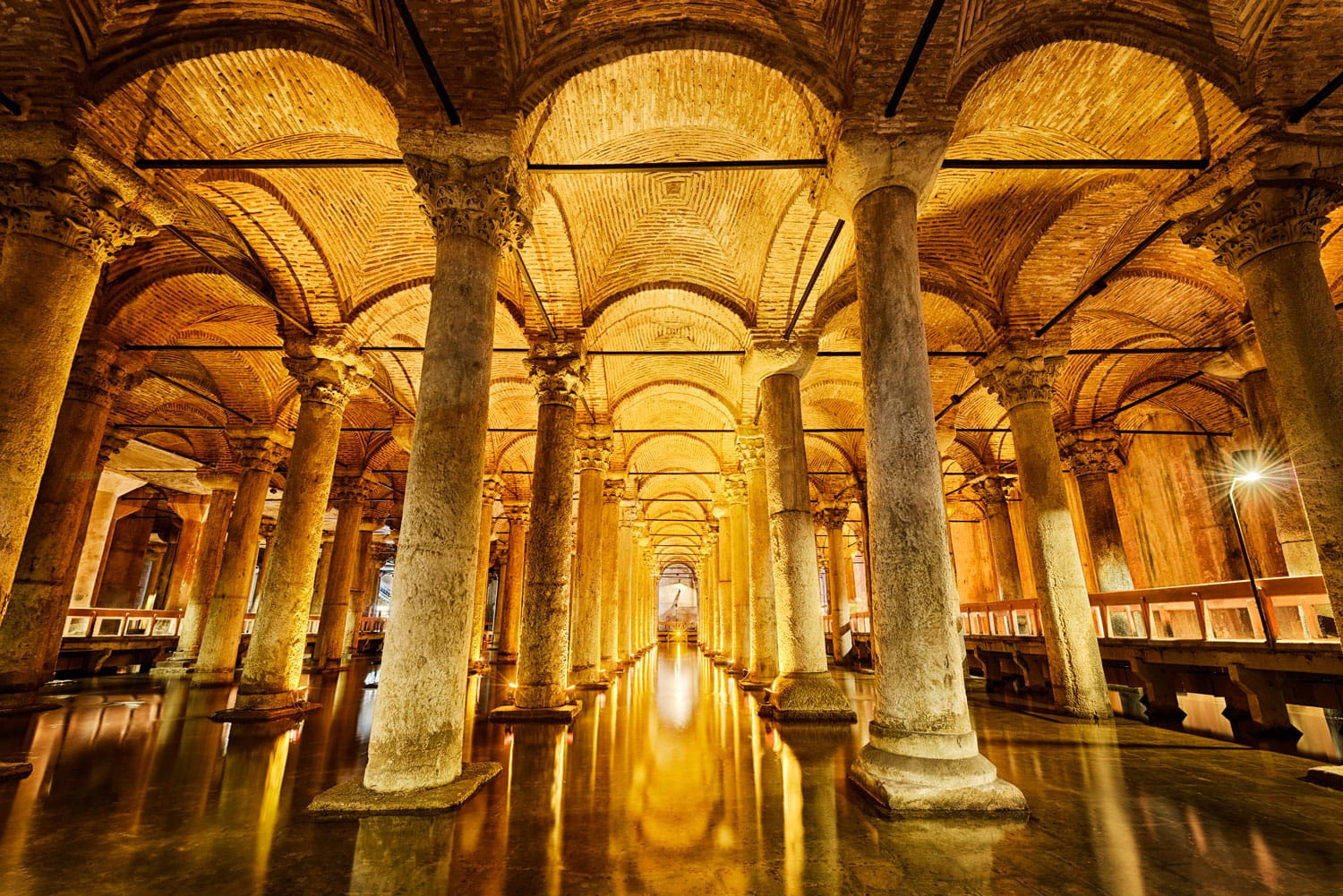
Basilica Cistern
Heading across Sultanahmet Square yet again, you’ll soon come to an attraction that many don’t see coming, literally. The Basilica Cistern is an underground reservoir that was once the largest of many throughout the city to house Istanbul’s water supply. While that may not sound all that impressive, the Basilica Cistern actually looks like a partially flooded, subterranean palace hall. It’s an extremely moody, atmospheric attraction that lets the imagination run wild, especially with its two creepy Medusa head carvings dating from the Roman era.
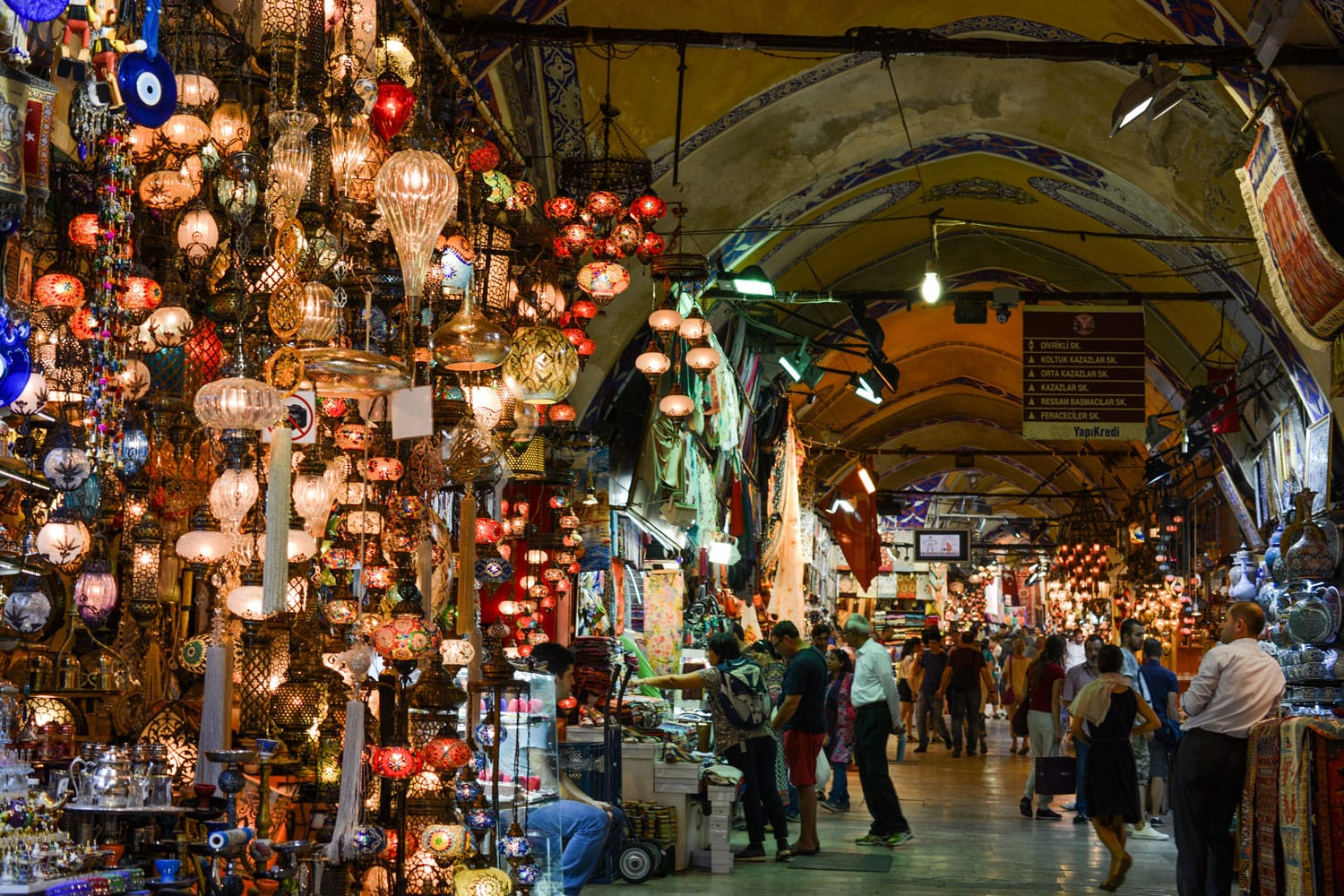
Grand Bazaar
Rounding out a busy first day, it’s off to Istanbul’s Grand Bazaar to experience the famous covered market. The Grand Bazaar is one of the largest and oldest covered markets in the world, with much of the structure dating from the 15th century. Inside the sprawling bazaar are 61 covered streets and over 4,000 shops, meaning you’re never going to see the whole place in one go and can wander and window-shop endlessly.
Istanbul Itinerary: Day 2
With many of the best known attractions having been covered, it’s time to see what else the city has to offer by first heading to the shores of the Golden Horn in Eminönü and then crossing over into the Galata and Taksim neighborhoods of Istanbul.
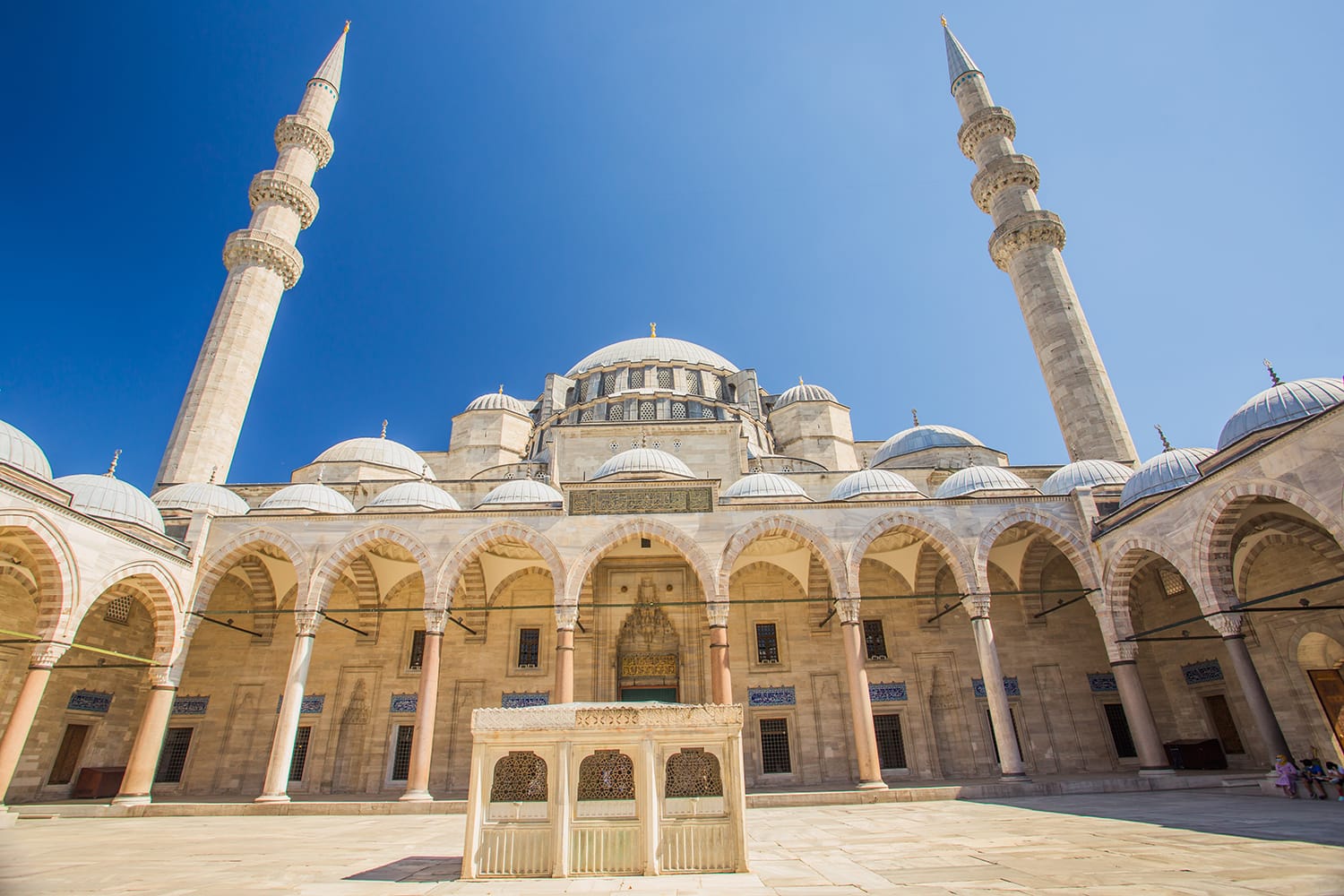
Süleymaniye Mosque
Begin your day in the Eminönü area of Istanbul by visiting the elegant Süleymaniye Mosque. While not as famous as the Hagia Sophia or the Blue Mosque, this Ottoman mosque is one of the city’s finest, as it features a beautiful forecourt and an uncomplicated yet still stunning interior. The mosque was built by Süleymaniye the Magnificent in the mid-16th century and the sultan’s tomb can be found in the mosque’s tranquil cemetery.
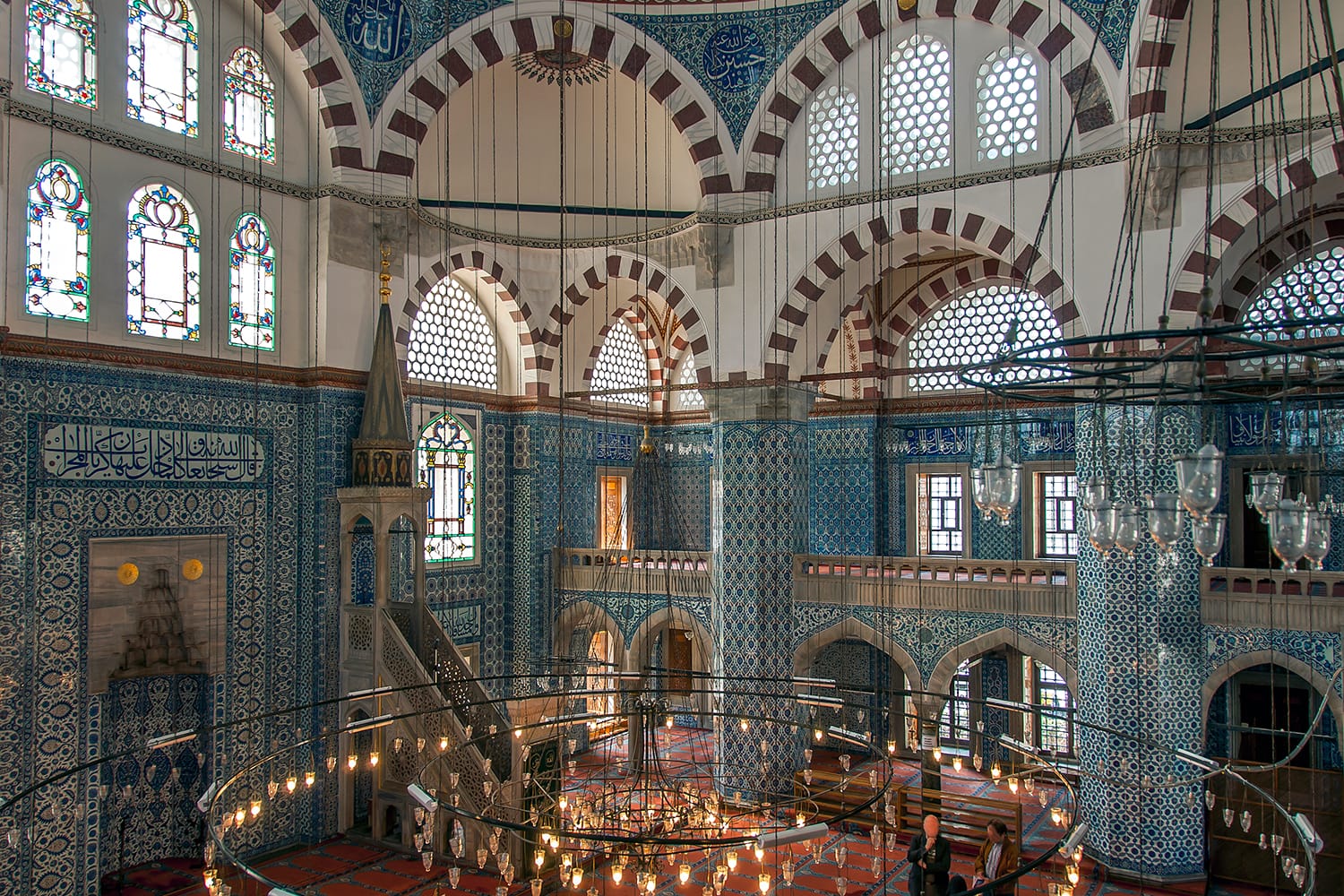
Rüstem Pasha Mosque
Just a short walk away, you’ll reach yet another memorable mosque in Istanbul, the Rüstem Pasha Mosque. What makes this mosque a must-see even after you have visited several other mosques in the city is the way that it uses its pretty Iznik tiles. Everywhere you look inside the Rüstem Pasha Mosque you’ll find vibrant color, from the carpet to the windows, but it’s the vivid and colorful patterns of the tiles that really stick with you. One other benefit of coming here is that it’s likely to be the quietest of the mosques, allowing you to really take in the space free from other tourists.
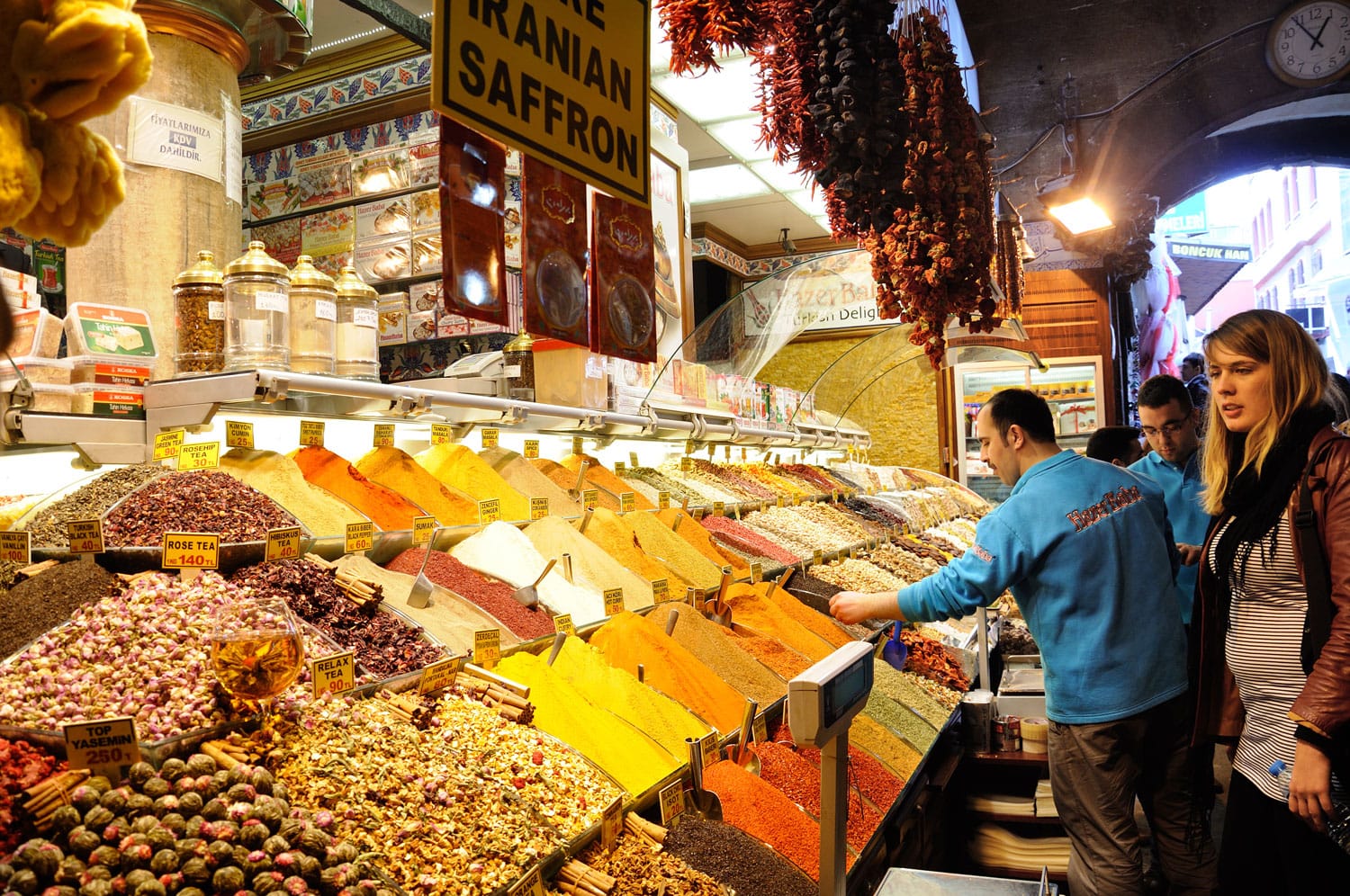
Spice Bazaar
While everyone has heard of the Grand Bazaar, fewer people know of Istanbul’s equally atmospheric Spice Bazaar, or Mısır Çarşısı. A huge bazaar by any standards, the Spice Bazaar is a delight for the senses as you get to experience the colors and aromas of the spices, herbs, fruits, nuts, and sweets on sale among its many stalls. The building itself is quite a sight as well and dates from the 17th century.
Galata Bridge
It’s time to leave Eminönü behind and find out what Galata and Taksim are like, which means crossing the ever-busy Galata Bridge. The bridge spans the Golden Horn and is seemingly always lined with fishermen pressed up against its railings. As you cross the bridge, you’re treated to views of both sides of the Golden Horn, allowing you one of the best views of Istanbul’s segmented cityscape.
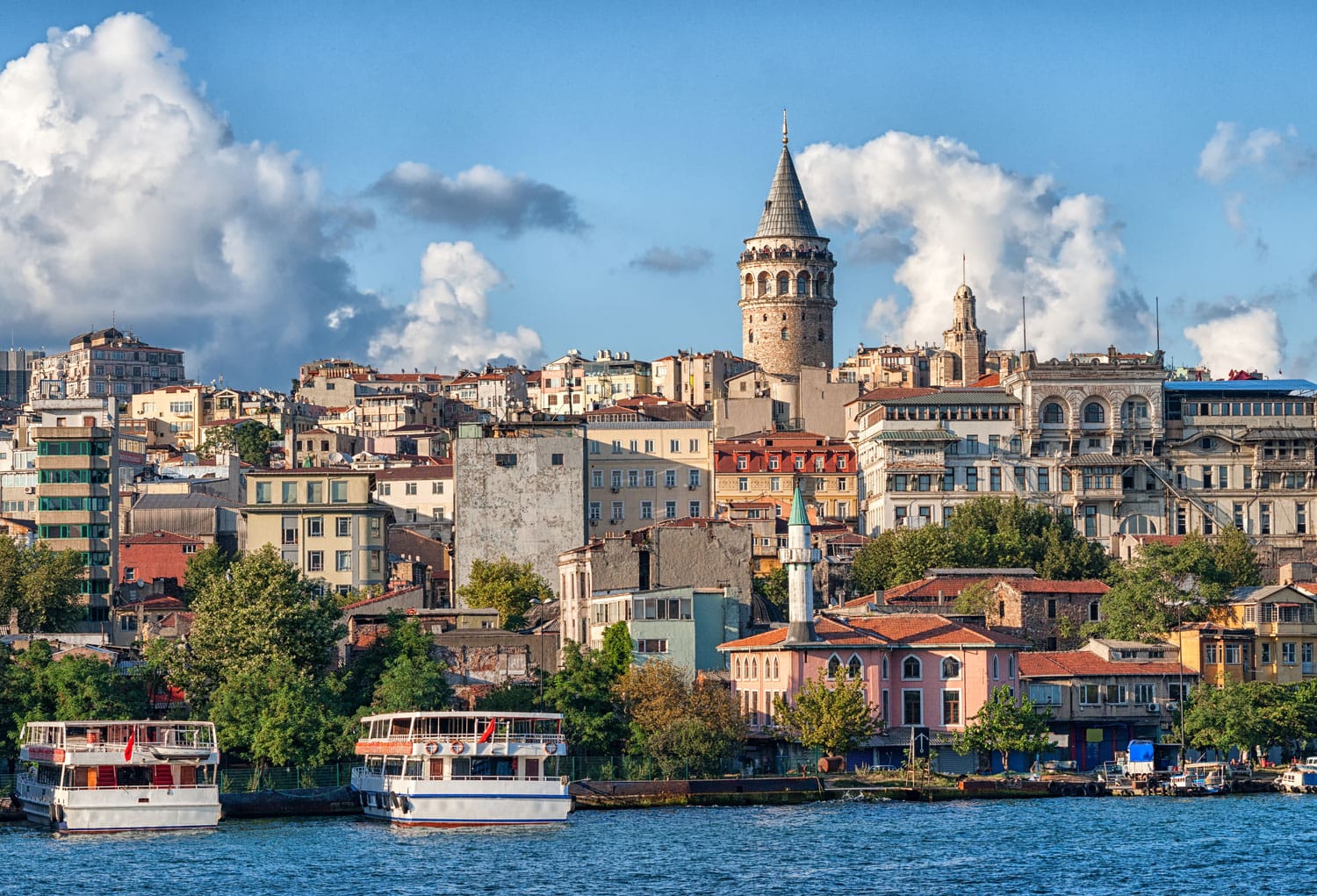
Galata Tower
Standing out quite noticeably among the rooftops of Galata, also known as Karaköy, is the distinctive figure of Galata Tower. You won’t see many European-style towers around the city, making this former watchtower a special place to visit. Galata Tower was built during the 14th century and reaches a height of 62.6 meters (205.3 feet). Just shy of the top of the tower is an observation deck that offers one of the best views in Istanbul, especially south to the iconic landmarks of Sultanahmet.
İstiklal Avenue
One of the most famous streets in Istanbul is İstiklal Caddesi or Istiklal Avenue, which runs from near Galata Tower right through to Taksim Square. The long pedestrian street is lined with modern shops, boutiques, cafés, and restaurants, providing you with a glimpse into what modern Istanbul is like. But it also features one of the city’s tram lines running down it, giving the street a bit of old-fashioned charm and giving you plenty of photo opportunities.
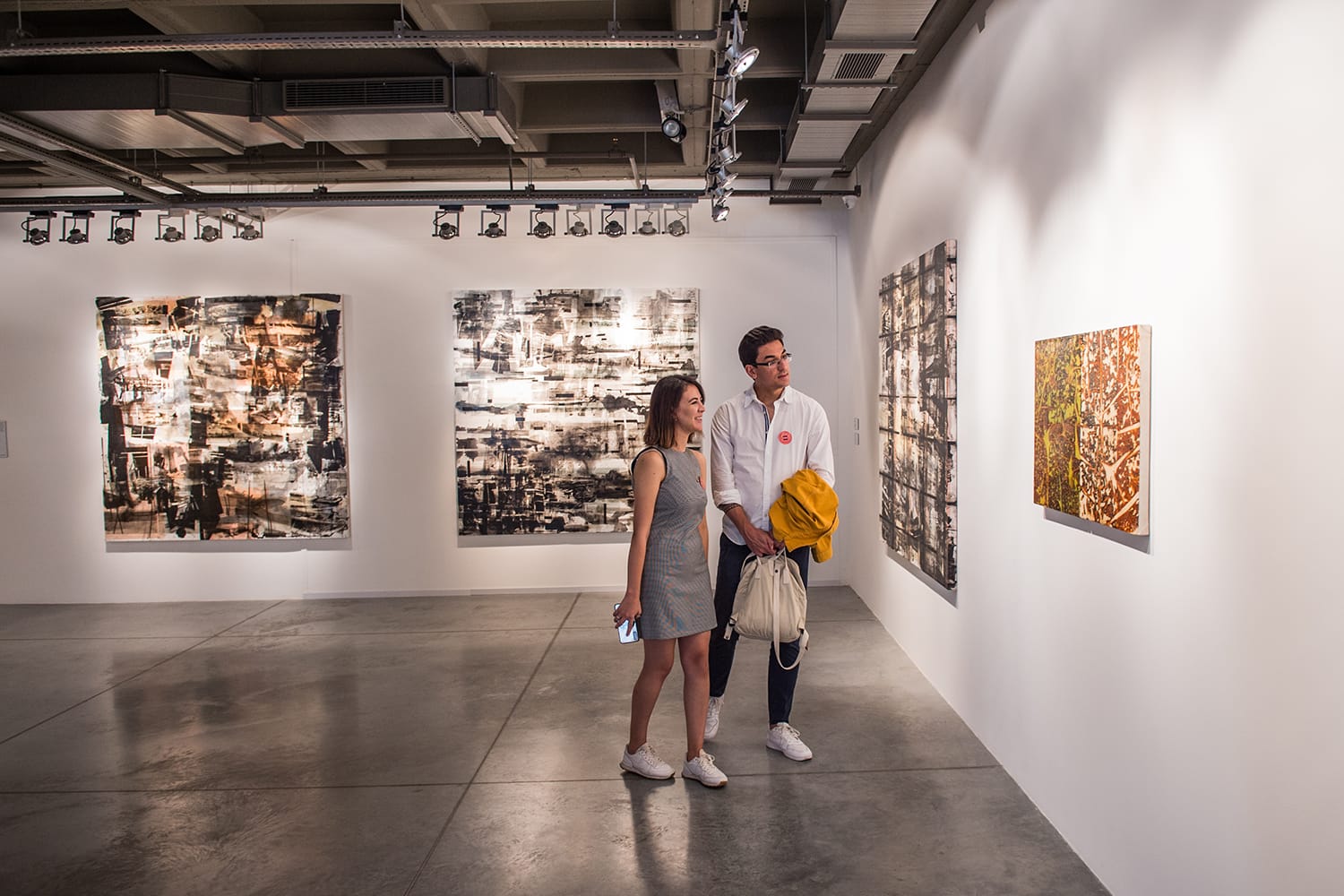
Istanbul Museum of Modern Art
Continuing with the modern trend, the last stop of the day is the Istanbul Museum of Modern Art. Not everything to see in Istanbul has to do with the city’s history or religion, and this fantastic museum proves that. The museum features an expansive collection of 20th-century and modern art, with a strong focus on Turkish modern art, presented through permanent and temporary exhibitions. It even has its own cinema, which screens special films on Thursdays and the weekend.
Istanbul Itinerary: Day 3
For your final day sightseeing in Istanbul, it’s time to explore beyond the city center and visit other interesting parts of the city, including areas across the Bosporus.
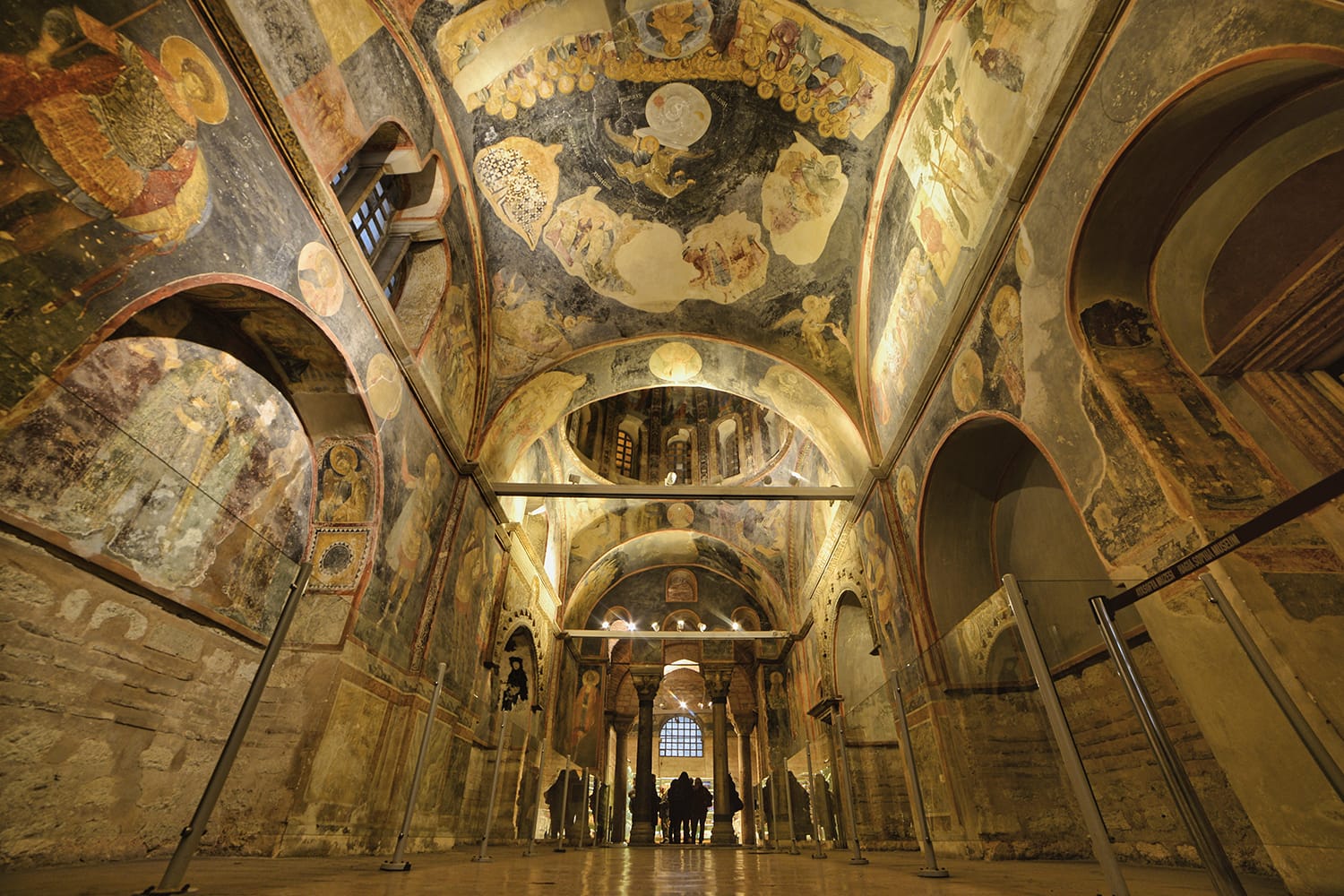
Kariye Museum (Chora Church)
After seeing so many mosques around Istanbul, let’s mix things up by visiting the Kariye Museum house inside the Chora Church. Dating from the Byzantine era, this ancient Greek Orthodox church features some brilliant mosaics as well as frescoes across its walls and ceiling added over the years during its many renovations. Like many buildings originally built as churches, the Chora church now functions as a mosque.
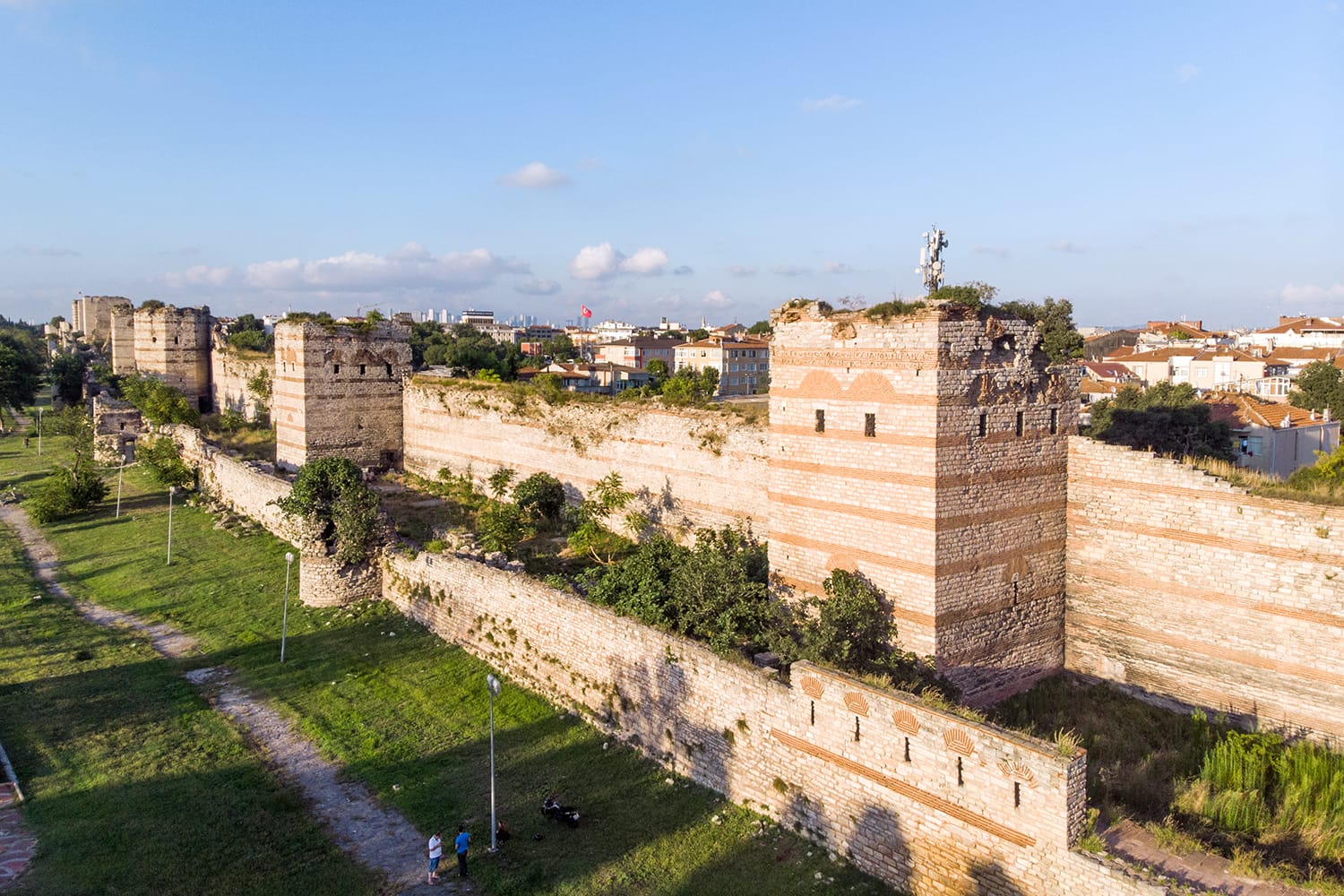
The Walls of Constantinople
Just a few streets from the Kariye Museum, you can find another impressive historical landmark of Istanbul, the Walls of Constantinople. These imposing walls have stood since the 5th century and helped defend the city for centuries, only falling twice in the city’s long history. Visitors are able to walk on the walls and enjoy the views they afford, but just seeing how sizable and expansive these fortifications are makes you appreciate how large the urban area was even a thousand years ago.
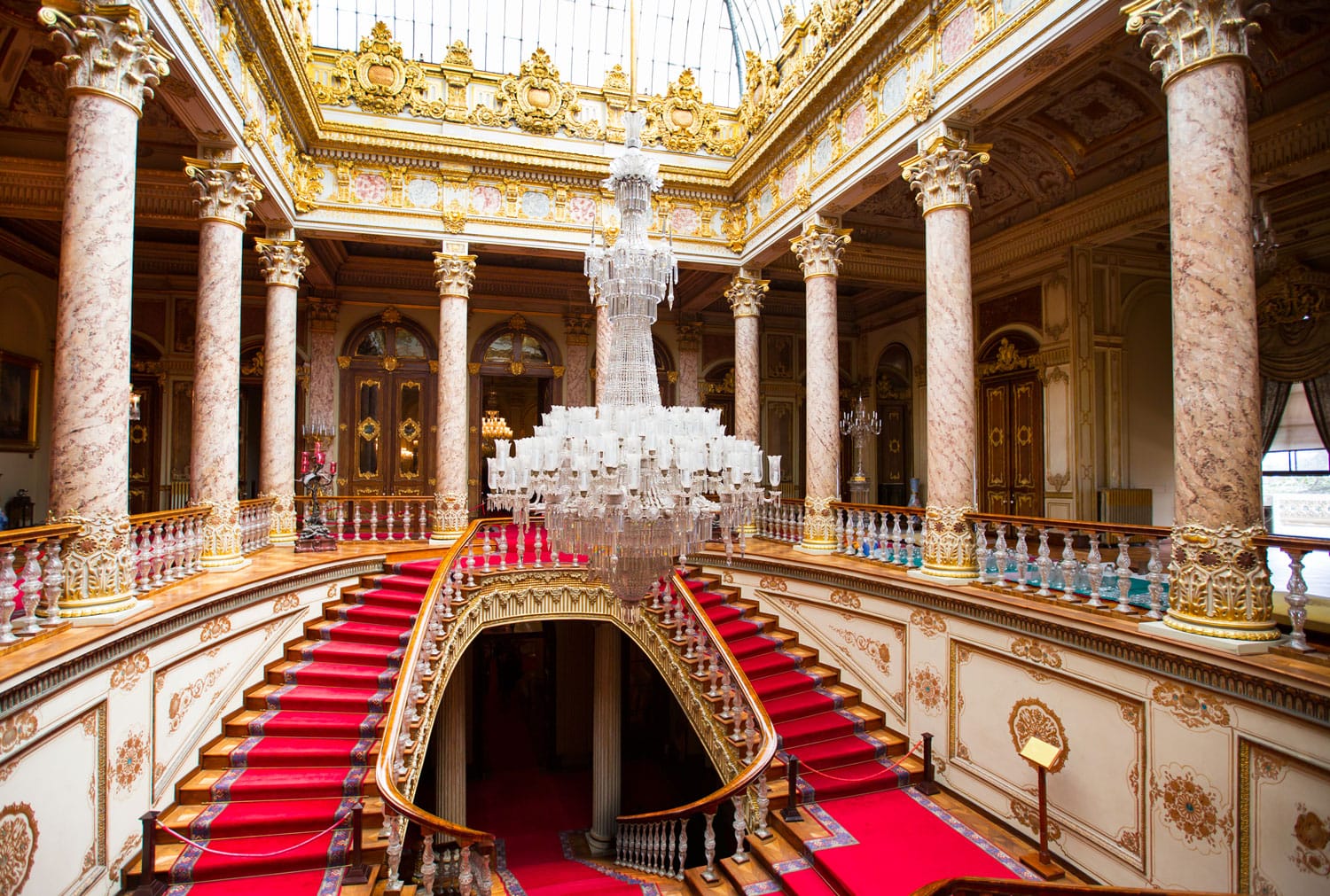
Dolmabahçe Palace
Head across the city to the waterfront neighborhood of Beşiktaş for our next stop, the lavish and ornate Dolmabahçe Palace. Sultan Abdülmecid I built the palace in 1854 to replace Topkapı Palace as the new residence for the Ottoman sultans. What makes it such an interesting place to visit is its eclectic mix of styles, with elements of Baroque and Rococo styles incorporated into its traditional Ottoman architecture. Every part of this palace, from the staircases to the main halls to the hammam, is utterly gorgeous and that includes its surrounding formal gardens as well.
Book a guided tour of the Dolmabahçe Palace here!
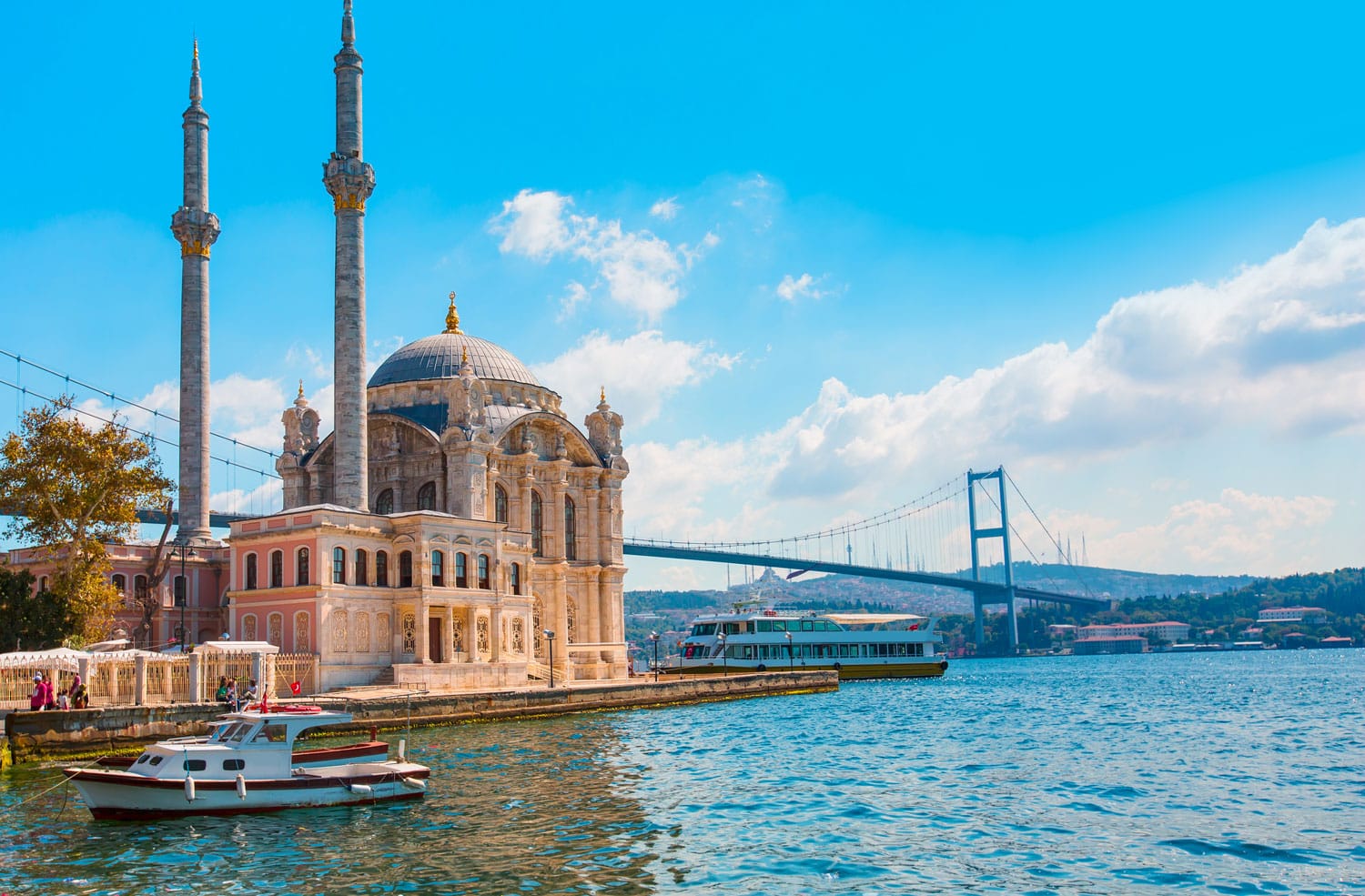
Ortaköy
Continuing further up along the Bosporus Strait, you’ll soon reach the fun and cosmopolitan neighborhood of Ortaköy. Tourists love coming to this outer neighborhood because it has a bit of a flashier, relaxed atmosphere and is home to loads of cafés and restaurants. The main spot that visitors come to see, though, is Ortaköy Square. Situated on the waterfront, it offers superb views out across the water and of the magnificent Baroque Ortaköy Mosque.
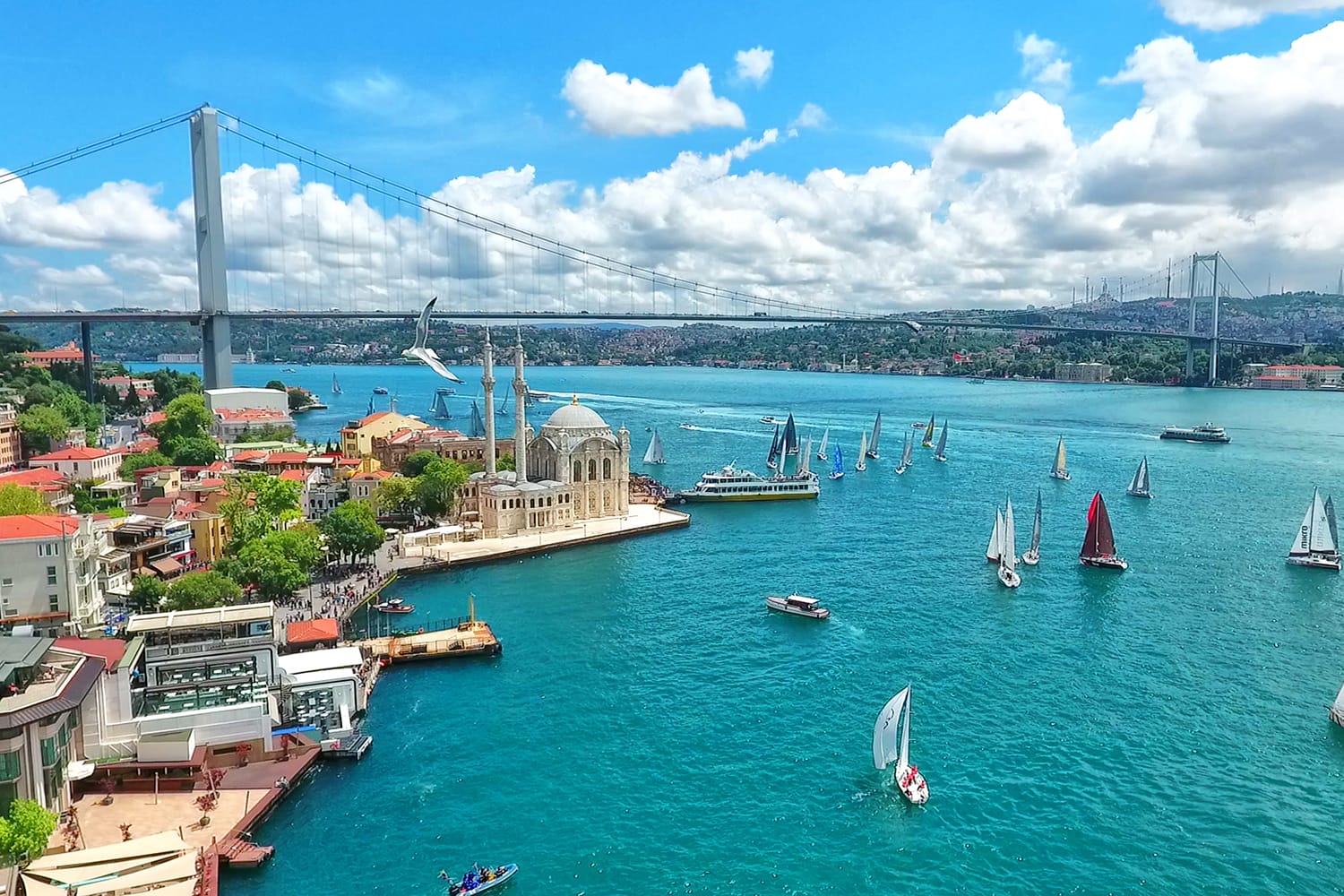
Cross the Bosporus
After all this time walking alongside it and enjoying its views, it is now time to actually head out onto the Bosporus Strait and visit the Asian side of Istanbul. Ferries across the Bosporus operate from Eminönü to both Kadıköy and Üsküdar, giving you options of where to explore once you reach the other side of the strait. What makes the ferry to Üsküdar a good choice is that it passes close to the Maiden’s Tower, a tiny island tower just off the coast that is an incredibly pretty sight. Otherwise, the ferry ride is all about sitting back, relaxing, and enjoying the views of Istanbul from the water.
Book a sunset cruise along the beautiful Bosphorus and marvel at Istanbul’s magnificent skyline at dusk.
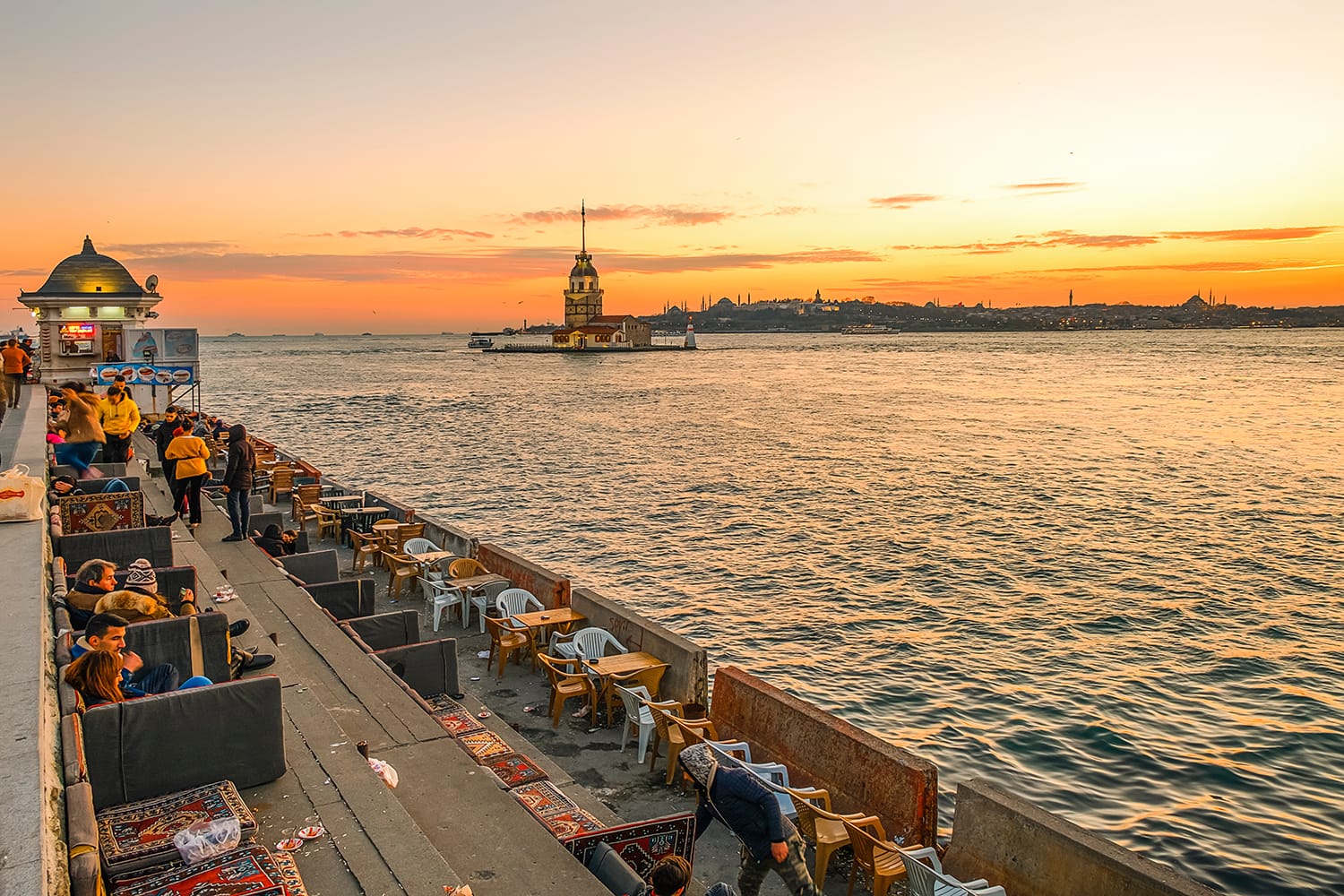
Üsküdar Coast Walkway
Having taken the ferry over, you’ll no doubt want to actually spend some time exploring Istanbul’s Asian side to see how it differs from what you’ve seen so far. One of the best ways to see a lot here is by following the Üsküdar Coast Walkway, a promenade that runs right along the waterfront. Here you’ll find mosques, parks, ferry docks, and excellent views back over to the European side. The walkway is especially popular in the early evening as its scenery is quite beautiful come sunset.
Istanbul Itinerary: Day 4 and Beyond
If you have more than three days for sightseeing in Istanbul, there’s plenty of ways you can occupy your time. One of the most popular activities we’ve yet to mention is a day cruise that takes you along the Bosporus up to the Black Sea, where you can visit the small village of Anadolu Kavaği.
And while there are other tours you can take to continue exploring Istanbul, there are also day trips that allow you to see more of what Turkey has to offer visitors. Travelers can visit one of Turkey’s most famous historical sites with a tour of Troy. There’s also the option of touring Gallipoli to see the battlefields and war memorials tied to the ANZAC landings of World War I.
So, there you have it, everything you need to know to thoroughly explore Istanbul in 3 days. We’re sure with this itinerary you’ll have no trouble planning your visit and making the most of your time in this remarkable and ancient city.
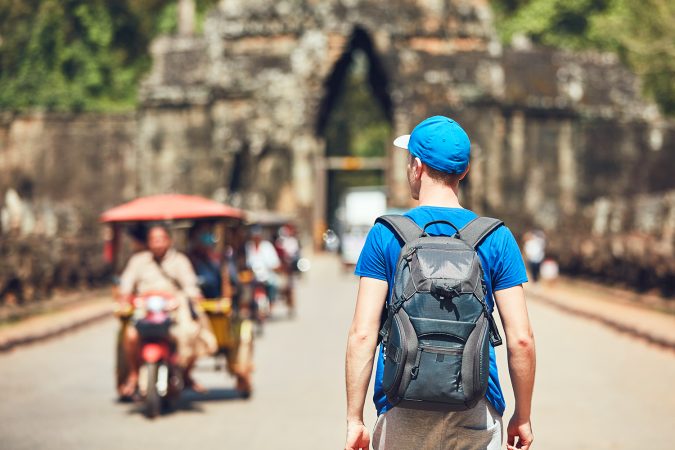
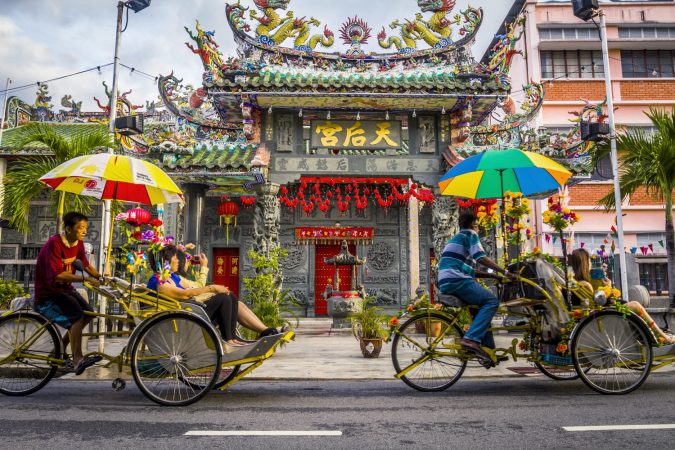
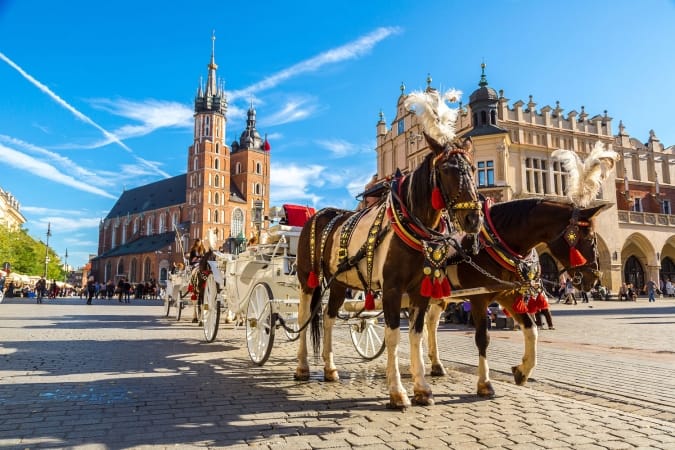
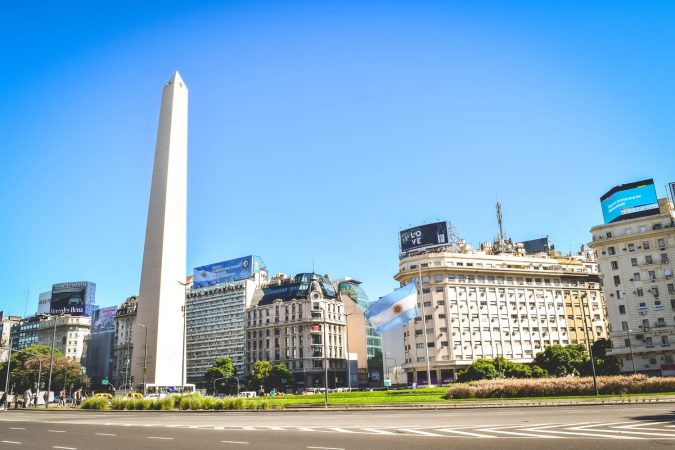

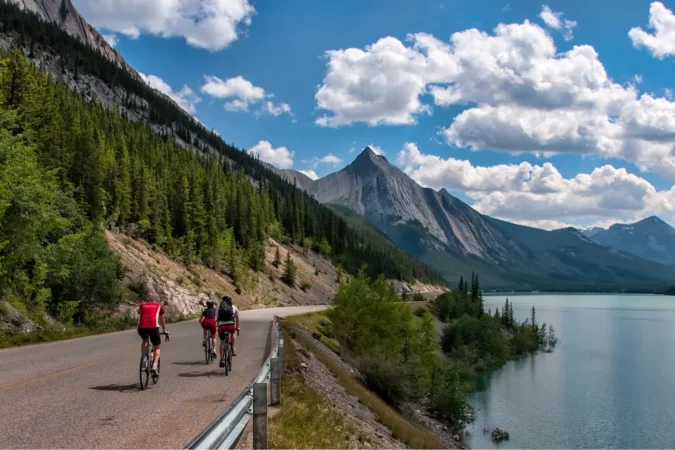

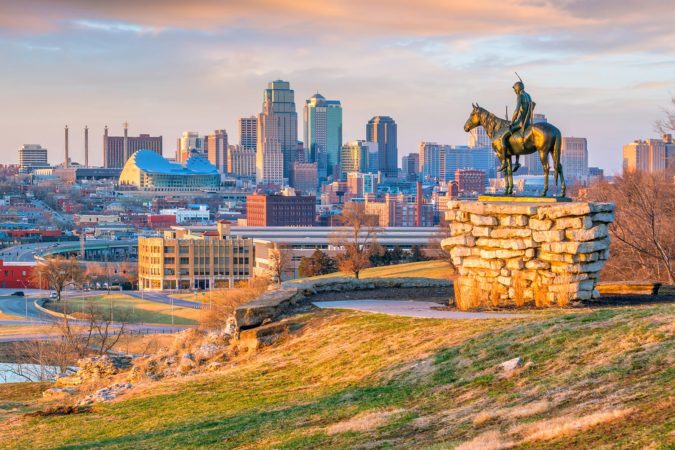
Comments